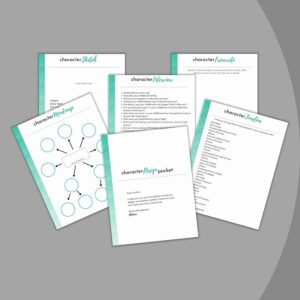
The Manuscript Revision
For some writers, the word revision makes them squirm.
Many novice writers go into the writing process fantasizing that they will only have to write one draft of their novel and it will be ready for publication.
Perhaps, they envision themselves sitting next to an open window, ocean breeze wafting gently through the fragrant air, sipping an exotic drink, while their muse easily supplies them with perfect sentences and a flawless plot.
Isn’t that how it works?
Hardly.
Writing is work. Getting a first draft down on paper takes time, thought, energy, and persistence. But, once that first draft is finished, the real work begins with the manuscript revision.
Tips on Revising
Revising a manuscript can be grueling. It’s certainly not for the faint of heart, and it can take a lot of blood, sweat, and tears.
However, here are some tips when revising:
1. Print out your manuscript and read it as a hard copy.
It’s easy to skip mistakes on a computer screen. On paper, with a pen in hand, it’s easier to spot misspellings, awkward sentences, and plot holes. You may be surprised at what you see when you start reading a print copy.
I like to print out a double-spaced copy of my manuscript. It makes it easier to read and I have room to make changes or add notes.
2. While reading your hard copy, be sure to mark it up.
Rewrite sentences, cross out sections that don’t support your plot in some way, add in characterization, and spice up the dialogue.
I like to use highlighters to mark sections so I can quickly see where I need to make changes.
You can use different highlighter colors to denote things you’ve changed, like pink for dialogue and green for characterization. This just helps you organize your changes. Using colors can also show you where you may need to hone your skills.
3. Revise the entire manuscript before making the changes on your computer file.
You want to go through the whole story and make sure that it all works before you start making any changes to your document.
It’s also easier and more efficient to make all the revisions on your printout and then go back to your document, rather than going back and forth. If you continually go between the print copy and the document it’s easy to get confused and lost. (Don’t ask me how I know this. :))
By the end of this revision process, you should easily see all the changes you need to make.
What to Revise
While you’re revising your manuscript you want to look for pet words (just, like, look, really), stiff dialogue, lengthy description, too much telling and not enough showing, grammatical mistakes, boring characters, not enough conflict, and timing issues. Did a character mention a detail she didn’t actually know until the next chapter?
Ask yourself if the story makes sense and if you’ve established a story world that’s interesting and intriguing. Do you like your characters? Are you rooting for your character? Have you made the story question clear?
You want to try to read this as a new reader. That’s hard since you wrote the manuscript, but you want to try to read this like someone who’s never read it before.
A good tactic is to let your manuscript rest for a week or two before you try to revise it. During this time, read other books or try to clear your mind so when you return to your manuscript, you aren’t so close to it.
The Next Step
Once you’ve completed this process, go back to your file and input all the corrections. Do not be tempted to make more corrections at this point. If you feel that you need to make some changes, go back to the hard copy and work them out on paper before you transcribe them to the computer.
You don’t have to make endless passes over your manuscript.
Being a writer means you finish projects.
You write a book and then you write another one and another one. Don’t waste time endlessly revising one manuscript. If you feel that you don’t know how to improve it anymore, think about hiring a professional editor with reputable references.
Revision Shouldn’t Be Endless
The point is, don’t spend the rest of your life revising a single manuscript. You can get sucked into revising a manuscript over and over and over again to try to get it perfect.
It will never be perfect. You’ll always want to make changes to what you’ve written–it’s the nature of the game. We evolve as writers and we become more skilled, so we want to fix whatever we’ve written. But that only leads to an endless cycle of revision.
Don’t do that.
After Revision, Then What?
You’ve revised your manuscript and made changes. It’s the best you can write it.
Now what?
Let others read it. It’s generally a better idea to let other writers or readers read your book instead of family and friends. Those who are closest to you may not be as objective as you need them to be. Other writers will be more objective and help you see any holes in your plot or characterization issues.
You can find other writers willing to critique your work online or in-person. Writing conferences are a great place to find other like-minded writers who are searching for critique partners. Keep in mind, though, you need to be willing to read their work as well.
Once others have read your manuscript, consider their comments and make appropriate changes. You don’t have to make all the changes someone suggests. It’s your story, so you decide which changes, if any, you need to make. If several people make the same suggestion, you may want to consider that pretty carefully.
You Can Do This
Write the manuscript, go through it word by word making it the best you can, let others read it, make any other needed changes, and then submit it to a publisher or publish it yourself.
That’s how you become an author.
You can do this! It does take work, effort, dedication, and time to write the best manuscript that you can, but you can do it.
And then you can see your work published and for sale on Amazon, which is exhilarating and awesome!
***Have you received my FREE course: Become an Idea Factory? You can click here to learn more about it. It’s a 7-day course delivered right to your inbox that helps you learn how to generate ideas. I know these techniques work because I use them! Find out more here.
***Do you need help organizing your ideas for your novel? I have developed an Outline Design Packet to help other writers organize their thoughts and arrange scenes so they don’t have to interrupt their writing time. This is what I use to outline my books.

***If you need some help creating your characters, download my free Character Design Packet here. It will help you create compelling, unforgettable characters that will make your story come alive.

***Need help writing your first chapter? Check out my course: Writing a Fantastic First Chapter.
In this course, Writing a Fantastic First Chapter, you will learn what components you need to include in your first chapter to hook readers. With examples and assignments, you will put into practice what you learn and you can ask questions all along the way. A first chapter checklist, a character sheet, and a character interview are all included as downloads.
Don’t try to write a first chapter in the dark. This course will shine the light on what elements you need to help you navigate writing the all-important first chapter, so you can win over readers.
***Do you already have a manuscript? If you can’t afford an editor, you might be interested in Pro Writing Aid Writing Software. This writing software helps you improve your writing to be the best it can be. It’s like having your own private editor for a fraction of the price. You can try it for free for 2 weeks. You can click here to learn more about it.
***This post may contain affiliate links which may compensate me with no additional cost to you.

